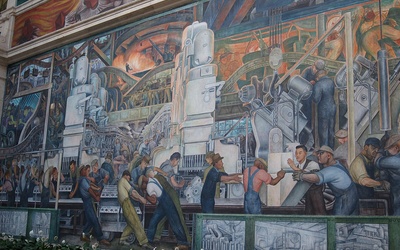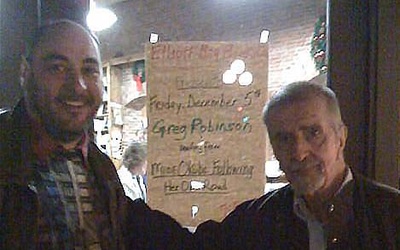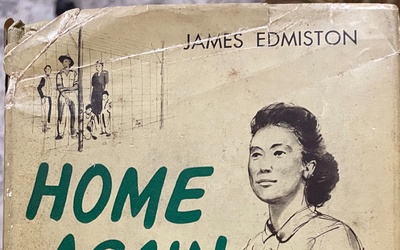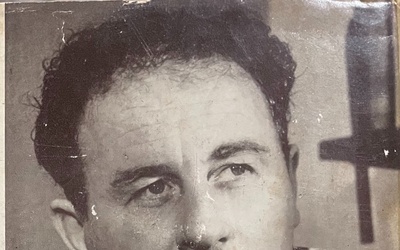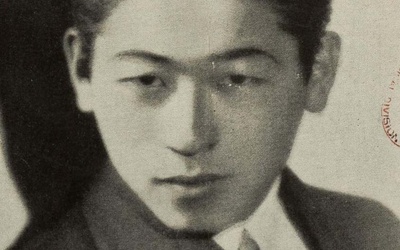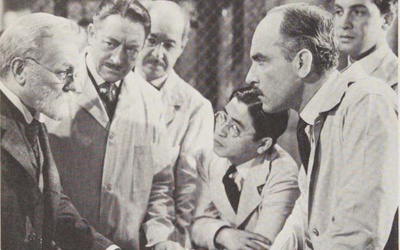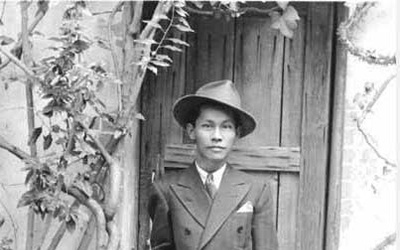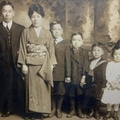
Greg Robinson
@GregGreg Robinson, a native New Yorker, is Professor of History at l'Université du Québec À Montréal, a French-language institution in Montreal, Canada. He is the author of the books By Order of the President: FDR and the Internment of Japanese Americans (Harvard University Press, 2001), A Tragedy of Democracy; Japanese Confinement in North America (Columbia University Press, 2009), After Camp: Portraits in Postwar Japanese Life and Politics (University of California Press, 2012), Pacific Citizens: Larry and Guyo Tajiri and Japanese American Journalism in the World War II Era (University of Illinois Press, 2012), and The Great Unknown: Japanese American Sketches (University Press of Colorado, 2016), as well as coeditor of the anthology Miné Okubo: Following Her Own Road (University of Washington Press, 2008). Robinson is also coeditor of the volume John Okada - The Life & Rediscovered Work of the Author of No-No Boy (University of Washington Press, 2018).
His historical column “The Great Unknown and the Unknown Great,” is a well-known feature of the Nichi Bei Weekly newspaper. Robinson’s latest book is an anthology of his Nichi Bei columns and stories published on Discover Nikkei, The Unsung Great: Portraits of Extraordinary Japanese Americans (University of Washington Press, 2020). It was recognized with an Association for Asian American Studies Book Award for Outstanding Achievement in History Honorable Mention in 2022. He can be reached at robinson.greg@uqam.ca.
Updated March 2022
Stories from This Author
Reflections on a Concocted Conversation
Jan. 16, 2023 • Greg Robinson
One of the first books of fiction published in the post-World War II era to reference the wartime removal of Japanese Americans was John Franklin Carter’s novel, The Catoctin Conversation. Carter’s novel, published in 1947 under the pen name Jay Franklin, revolves around an imaginary meeting in mid-1943 between US President Franklin D. Roosevelt, British Prime Minister Winston Churchill, and the Nazi defector Ernst “Putzi” Hanfstaengl, as well as Bernard Baruch and Harry Hopkins. The author inserts himself as a …
Nikkei in Motown: Masao Hirata, Diego Rivera, and Japanese in Detroit
Jan. 4, 2023 • Greg Robinson
One of the splendors of the city of Detroit is the Detroit Art Institute, a museum that boasts collections of painting, sculpture and objects drawn from around the world. A special highlight is the museum’s interior courtyard, site of the Detroit Industry murals. This series of 27 frescos, commissioned by museum director Wilhelm Valentiner with financing from automobile baron Edsel Ford, was created between 1932 and 1933 by the renowned Mexican artist Diego Rivera, who is said to have considered …
In Tribute to Roger Daniels: The Father of Us All
Dec. 20, 2022 • Greg Robinson
The distinguished historian Roger Daniels died on December 9, 2022. In the past days, I have taken a lot of time to reflect on how he influenced me, both professionally and personally. I first met Roger in January 1998, at the annual meeting of the American Historical Association. I was then at a crucial crossroads in my life. A year earlier, after quitting graduate school and abandoning in the process a half-finished dissertation, I had uncovered intriguing and disturbing evidence …
Bradford Smith: An American to Japan (and Back) — Part 2
Dec. 2, 2022 • Greg Robinson
Read Part 1 >> In February 1942, Bradford Smith was recruited by Alan Cranston, the future U.S. Senator, for a job with the Office of War Information (then called the Office of Facts and Figures). In April of that year, he left his teaching position at Bennington and moved to Washington, D.C. to take a position with OWI Foreign Language Division, headed by Cranston. In keeping with his own assumed expertise on Japan, Smith was assigned to head OWI’s “Japan …
Bradford Smith: An American to Japan (and Back) — Part 1
Dec. 1, 2022 • Greg Robinson
Outside defenders of Japanese Americans during World War II, especially those in positions of power, were rare. Issei and Nisei did, however, receive various forms of assistance from a circle of “old Japan hands,” white Americans who had lived in Japan before the war and had become familiar with Japanese culture. These included such diverse figures as Protestant missionary Galen Fisher, Catholic priest Leopold Tibesar, naval agent Kenneth Ringle, diplomat William Castle, and (once he was freed from confinement in …
The Strange Case of James Edmiston and ... James Edmiston — Part 2
Nov. 14, 2022 • Greg Robinson
Read Part 1 >> James Ewen Edmiston, Jr., who would take his father’s name at birth, and later on his closeness to Japanese Americans, was born in San Francisco, California on January 7, 1912. After moving to Oregon as a child with his family, he attended Medford High school, where he won the school tennis championship in 1929. He continued to play in tennis tournaments in the years that followed. In 1930 and 1931, he won the Central Oregon tennis …
The Strange Case of James Edmiston and ... James Edmiston — Part 1
Nov. 13, 2022 • Greg Robinson
In recent years, I have done a good deal of research on James Edmiston. Through my reading, I discovered that James Edmiston was director of the WRA resettlement office in San José at the close of World War II, as Japanese Americans returned to the coast, and that his support for them led to attacks on him as well. I also read James Edmiston’s 1955 novel Home Again, a “documentary novel” about a Japanese American clan through immigration, settlement, and …
From Wilfred Hari to Yoshitaka Horiuchi: The career of an Expatriate Executive - Part 2
Nov. 1, 2022 • Greg Robinson
Read Part 1 >> The outbreak of the Pacific War would decisively shift the life of Wilfred Yoshitaka Horiuchi. Ironically, at first it aided his career, as Wilfred Hari was called back to work after Pearl Harbor for a walk-on part in a new war propaganda film, Secret Agent of Japan. When interviewed about the film by syndicated columnist Harrison Carroll in January 1942, Hari noted that he did not mind playing an evil Japanese, since he was a U.S. citizen. …
From Wilfred Horiuchi to Wilfred Hari: The Career of a Nisei Writer and Performer - Part 1
Oct. 31, 2022 • Greg Robinson
One exceptional Nisei, the different pieces of whose life I have been trying to investigate, was a man by the name of Yoshitaka Wilfred Horiuchi. In the course of a 50-year career, operating in different places and under different names, he made contributions in a variety of fields, from the silver screen to government to education to business. Yoshitaka Wilfred Horiuchi was born in Lihae, Hawaii, in 1909, the youngest son of six children of Tohei Horiuchi, a sugar plantation …
A Heart to Heart: Carlos Bulosan and Japanese Americans - Part 2
Sept. 23, 2022 • Jonathan van Harmelen , Greg Robinson
Read Part 1>> In our previous section, we discussed Carlos Bulosan’s biography and his rise to success as an Asian American writer during the war years. While Bulsan wrote as a representative of Philippine Americans and centered his discussion on the experience of Pinoy workers, he showed a deep interest in other Asian American groups, particularly Japanese Americans. At a time when tensions were high between Filipino and Japanese Americans due to the Pacific War, Bulosan expressed feelings of friendship, …


